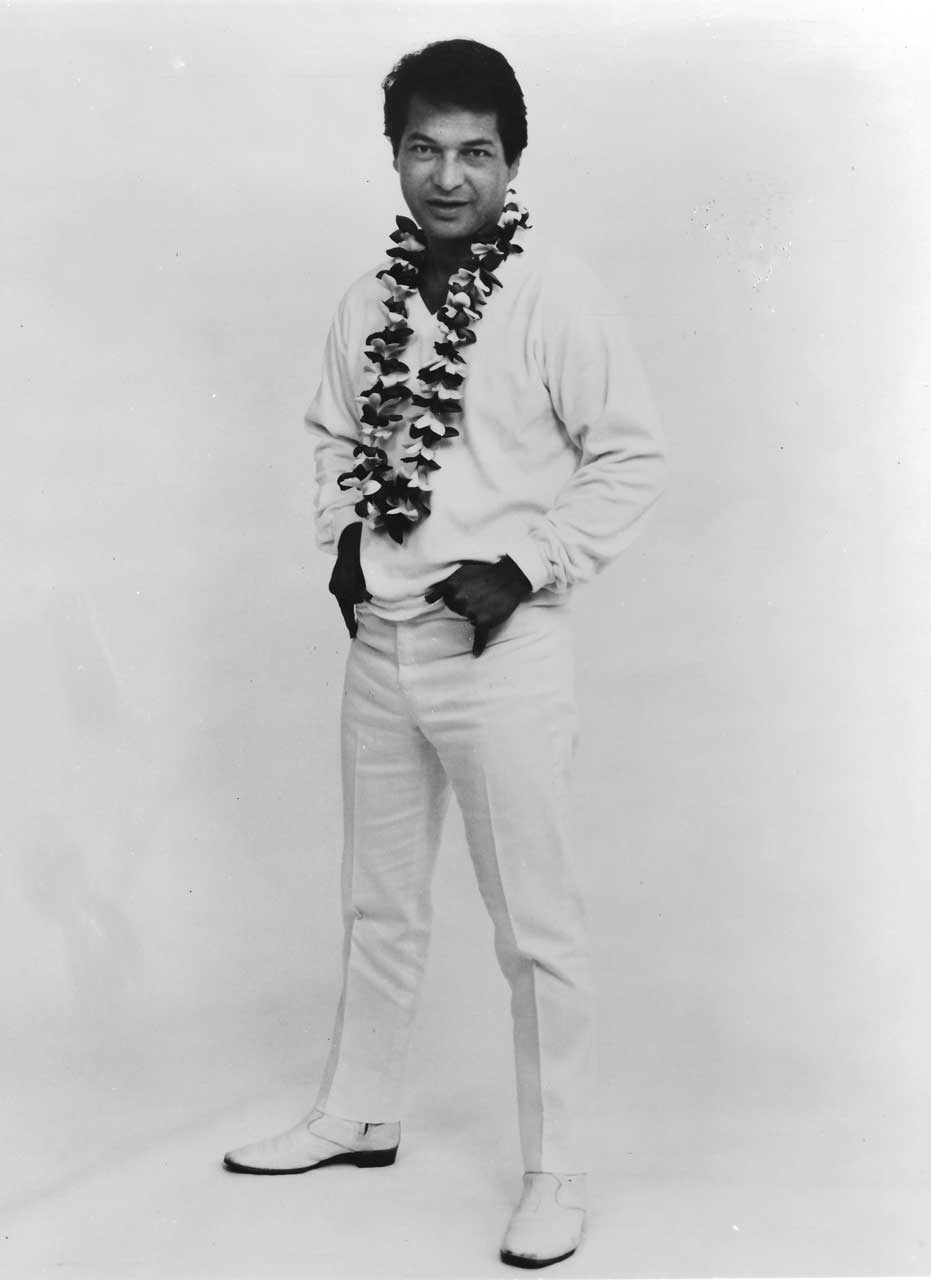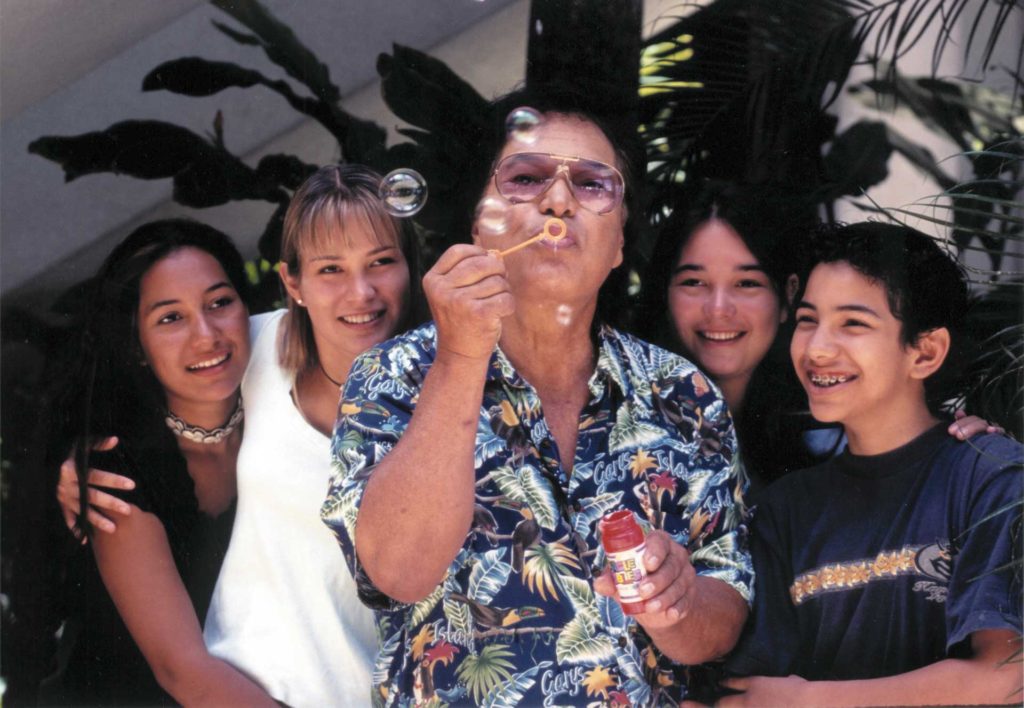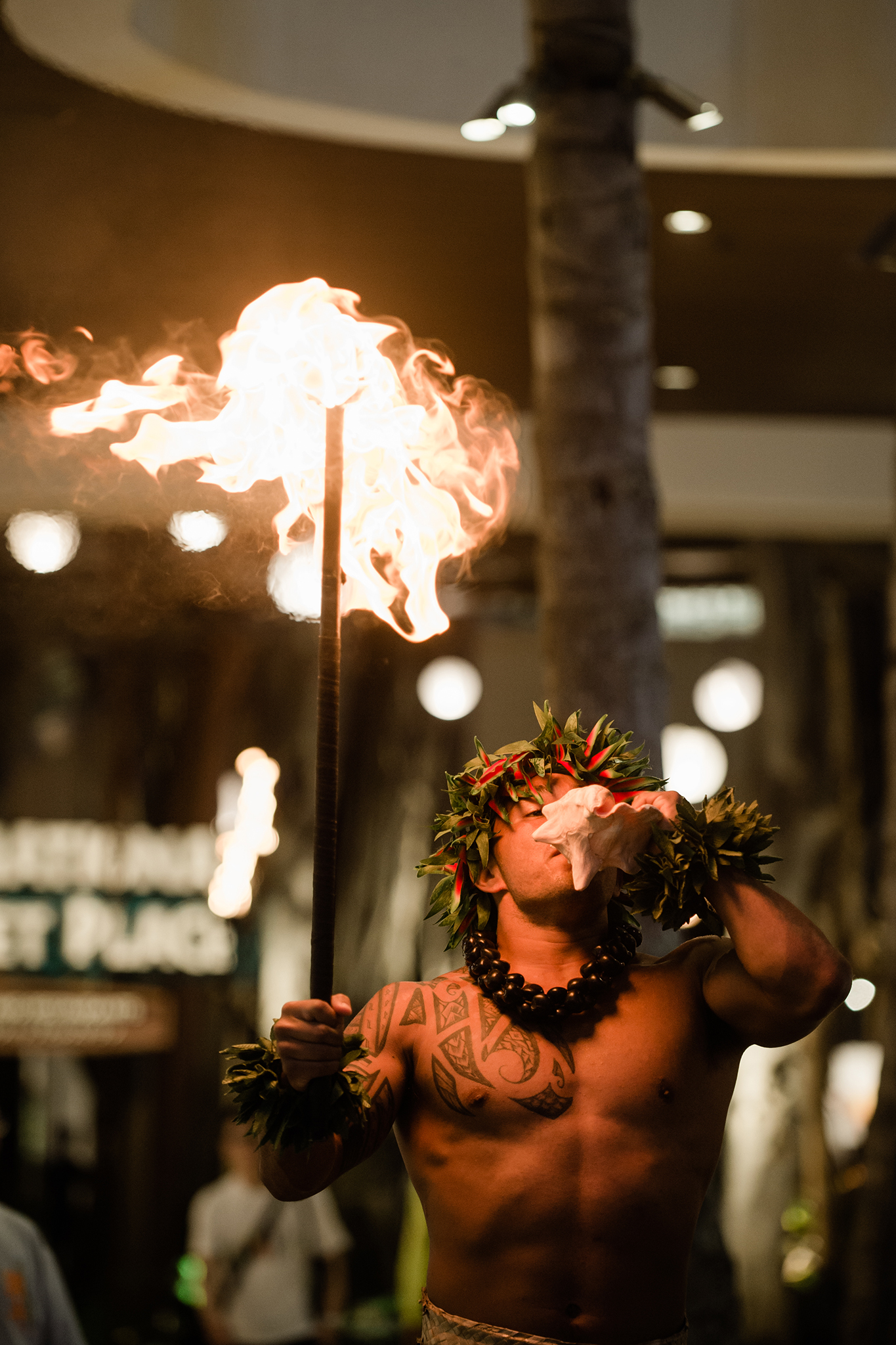

I’ll Remember You
The life and legacy of Don Ho is celebrated with a moving tribute of the performer by artist Kim Duffet.
GRETA BEIGEL
COURTESY OF DON HO TRUST
ドン・ホーの87回目の誕生日となるはずであった2017年8月13日、インターナショナル マーケットプレイスのバニヤン・コートに家族や友人達が集い、アーティストのキム・ダフェットによって製作された偉大なるミュージシャンの銅像がお披露目され、ハワイ文化への多大な貢献を祝福した。
On August 13, 2017, what would have been Don Ho’s 87th birthday, family members, friends, and former musical colleagues gathered at the Banyan Court of Waikīkī’s International Market Place. They were there to witness the unveiling of the famed musician’s larger-than-life likeness, and commemorate his contribution to Hawaiian culture.
Behind a makeshift barricade, fans and onlookers speculated about the depiction of the beloved icon. Would Ho be sculpted as a football star, for his days on the field at Springfield College, or as a U.S. Air Force pilot, for his time flying cargo planes? Or would he be depicted onstage, recalling his raucous performances that lifted audiences out of their seats and sent them home in a haze of tropical delirium?
At the anointed hour, Honolulu artist Kim Duffett lifted the veil. There stood a bronze figure of a grinning Ho, one hand holding a microphone, the other beckoning. “I wanted to craft him in his prime,” Duffett says. “I wanted to do something with him in performance, transferring his weight from one foot to the other or calling out a singer or a grandmother he wants to put in the hot spot. I like to have a sense of movement, because it gives a piece life.”
Born in Honolulu in 1930, Donald Tai Loy Ho honed his singing chops at Honey’s, a bar his parents owned on O‘ahu’s east side. In the early 1960s, he emerged as a musical tour de force at clubs in Waikīkī. After one such nightclub appearance, Ho was approached by Duke Kahanamoku, who invited Ho to appear at his namesake supper club at the back of the original International Market Place. Ho signed on to perform three shows nightly with his band, the Aliis.
Radio host Kimo Kahoano attended many of Ho’s late-night shows at the Waikīkī venue. “There were lines and lines outside Duke’s with more and more people wanting to see Don and join in the fun,” Kahoano recalls. “He sang Hawaiian songs, English songs, whatever was popular at the time. The audiences loved the excitement.”

Ho soon catapulted into global stardom with television appearances and hit recordings, such as “Tiny Bubbles” and “I’ll Remember You.” But above all, Ho remained a masterful humorist and showman.
“He was funny and had a good sense of timing,” Kahoano continues. “Remember, Don was a pilot and understood what being in control was. He took that same concept and used it in his showcase. He would sit behind the organ, playing, like behind a command post. He knew where he wanted the show to go.”
Deeming it essential for an artist in Hawai‘i to establish a strong connection to the U.S. mainland, Ho scheduled performances across the country, from San Francisco to New York City. He also performed at Cocoanut Grove, the Los Angeles nightclub famed for presenting top-drawer entertainers. Celebrities like Frank Sinatra, Bob Hope, Milton Berle, Johnny Cash, and Dolly Parton often dropped in to sing, share a laugh, or simply say hi to Ho.
With his ability to perform songs from any genre, Ho could have easily joined the ranks of “legit” singers, Kahoano says. But instead, the performer opted to let the good times roll and remain true to his local-boy roots. In his 2007 memoir, Don Ho: My Music, My Life, the legend marvels at his longevity in the spotlight. “It was no big thing in terms of what Mainland guys did—the Beatles or the Doors or whoever the hell they are,” Ho writes. “But I don’t think you will find many other groups that sustained themselves this long, night after night, for 45 years.”








